Adventures in Africa 2012 – Part 1
“Did you ever wire that money? We still haven’t received it.”
A jolt of panic shot from my heart to my fingertips as I read the words on my e-mail screen. My breathing became more constricted, my palms moistened and my heart revved up. I had made a significant down payment on the most expensive trip of my life and now the trekking company was telling me that the large sum I had wired them did not go through. Either they were lying to me or I faced an extended conversation with our bank and possibly the loss of a few thousand dollars and a ruined honeymoon. Not good. Were they scammers? Was their bank corrupt?
“Are you sure you haven’t received it?” I e-mailed back. “Please double-check with your bank. I sent it two weeks ago and according to our bank, the funds went through.”
A few grand missing could mean the end of our honeymoon plans. Keith and I saved up for almost a year since our wedding for our dream honeymoon: a trip to Africa to climb Mt. Kilimanjaro and go on a 5-day wildlife safari. We arranged to spend a month training on the fourteeners of Colorado before our trip, bought our plane tickets to Nairobi, and I worked on arranging the details of the climb and safari. I had spent many hours over the previous days researching the options for climbing Mount Kilimanjaro. I decided to go with a local African company rather than a big company with a U.S. office since the middle man often walks away with several thousand dollars. After reading about the tragic issue of porter abuse on Kilimanjaro, Keith and I decided we would only consider a company certified by the Kilimanjaro Porter’s Assistance Project (KPAP). I carefully reviewed many websites and then began contacting promising individual companies to inquire on the packages they had to offer.
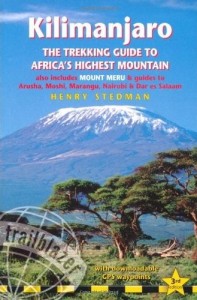
Wiring money to a developing country can always be a bit nerve wracking, but I thought I had done my homework here. The company I selected was still fairly new in the trekking business, but the reviews I found were all positive, including the review on the equipment rental side of their business which I discovered in our indispensable Kilimanjaro guide book.* In addition to being certified by KPAP, Gladys Adventure, a local woman-owned company, thoroughly answered all my questions and we worked together to draw up a contract which was signed by both us and them. They even threw in a free one-day coffee plantation tour for us. Then I wired the deposit–30% of the total cost of the trip. Now that money was missing. I had been pretty confident that the company was legitimate, but now doubts crept in.
The ten-hour time difference created an agonizing delay between e-mails; our side of the planet conducted business while their side slept, and vice versa. Over the next few days we wrote back and forth, trying to discover what had happened to the money. Much to our relief, the funds finally turned up, and we were back on track. The experience left me with doubts, though. Was this company going to be as great as they had originally seemed? Neither Keith nor I had ever spent this much money on a trip before. Were we wasting it?
Several Months Later…
We landed in Nairobi on September 9, 2012, after nightfall. At the airport we stood in a confusing line, creeping forward at about eleven inches per minute to buy our visas and go through customs, and then proceeded to where our shuttle driver waited for us. With greetings of “Jambo” and “Karibu” we were off to the Kenya Comfort Hotel, basic but clean and comfortable. A sign in the hotel’s lobby warned us to beware of “Nairobberi and Naibeggary.” Plagued by a confused internal clock and the anticipation of another early morning to catch the bus to Tanzania, I slept little.
The sun came up and I looked through the window at a purple blossoming jacaranda tree in Jevanjee Gardens Park down below. The hotel breakfast wasn’t bad–tea, french toast, pancake, fresh fruit (watermelon, papaya, pineapple) and my favorite: fresh passion fruit juice. At 7:15 someone arrived to walk us over to the bus and soon our journey to Tanzania began.
Bus to Tanzania and Arrival in Moshi
The shuttle left right on time–8:00 a.m. Every regular seat was full–Keith and I sat together–and we watched the countryside go by. We enjoyed a mostly smooth ride, with a few herds of goats, burros, or cattle occasionally slowing us down. We stopped for a short bathroom break at an expensive souvenir shop a few kilometers before the border. The border crossing was fairly painless except for the $100 each it cost us to get Tanzanian visas. When we returned to the bus we found we had acquired some additional passengers and they had taken our seats, so we rode in the center seats which fold into the aisle and have short backrests. This is not conducive to good sleeping–which is unfortunate because sleep overtook me and I kept flopping about and waking with a jolt.
In Arusha several people got off and we took normal seats again. I slept awhile and soon we arrived in the beautiful town of Moshi–its colorful flowering trees, green plants, red roofs and bustling shops inviting us to step out and enjoy it. We strained for a view of the famous Mount Kilimanjaro, but alas the clouds obscured her from view.
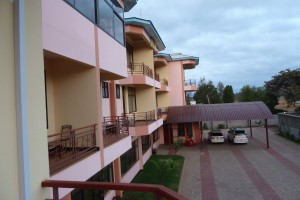
While dropping off passengers at one hotel I looked out the window and noticed a car from Gladys Adventures. I ran out to see if they were there for us, and sure enough! Nelvin introduced himself to us and helped us retrieve our packs from the bus, then took us to our hotel for the night: Stella Maris. For a budget category hotel they are really nice. Clean, beautiful, and friendly, with hot water, free internet, free shuttles into town (they are a few km out) and free breakfast. The place is so new that the upper level was still under construction.
We availed ourselves of the free shuttle service to run into town for a good traditional Tanzanian dinner. Nelvin met us at the Gladys Adventure office and took us to an ATM and then to the restaurant. We felt very taken care of. I had ugali and mchicha–thick corn mush and boiled and fried spinach-like vegetables. It’s a basic staple and nothing special to the locals who eat it every day and were amused that I had ordered it, but I enjoyed a new experience. Our waitress smiled with great pleasure when I told her how delicious it was. Michael, the driver from Stella Maris, came to pick us up from the restaurant at the appointed time. I slept very well that night.
Paying for the Tour
After breakfast of eggs, toast, fruit and tea, we checked out of Stella Maris and met Nelvin again for a ride to Gladys Adventures to finalize our payment and go on a tour of a coffee plantation. The payment process proceeded in typical African fashion with malfunctioning credit card machines, fax machines, and several trips around town. Finally the payment went through and we began our drive to Uru, a village with a coffee plantation.
Coffee Plantation
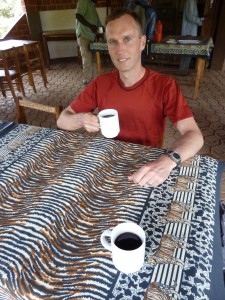
This time we were accompanied by another Gladys employee–Ombeni (meaning “Praise”), an upbeat young man with a great command of English and a dream of starting his own wildlife guiding company. At the plantation we were served a delicious lunch–again, traditional food and all vegetarian, and of course with a cup of fresh coffee from the plantation.
Rafel, a serious-faced older man, then took us on a tour. I got him to chuckle when I told him he looked like a famous American movie star–and indeed he was a Morgan Freeman doppelganger. He taught us all about how coffee is grown and made, why organic and fair-trade is better, and how the local coffee growers live.
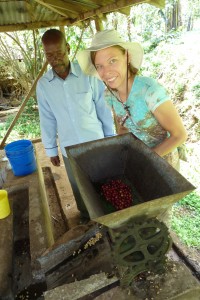
Rafel led us through the plantation, stopping to point out coffee plants in various stages of growth, then showing us how the coffee beans are picked, taken out of their skins, dried, roasted and ground. We went into the home of one of the coffee plantation workers, who roasted, ground, and brewed some delicious coffee for us.
Nearly everyone in this area is from the Chagga tribe. They have a traditional hut, still in use, that is 200 years old and a historical building. The landscape, on the lower slopes of Mt. Kilimanjaro, is very lush and beautiful with many flowering trees, banana trees with coffee growing in their shade, and separate fields of maize and beans (grown together). Most homes are very simple with small beds, a few cooking utensils, and an area for the animals. Unlike the Masaai who roam with their livestock, the Chagga people keep them in their houses to prevent them from destroying their crops.
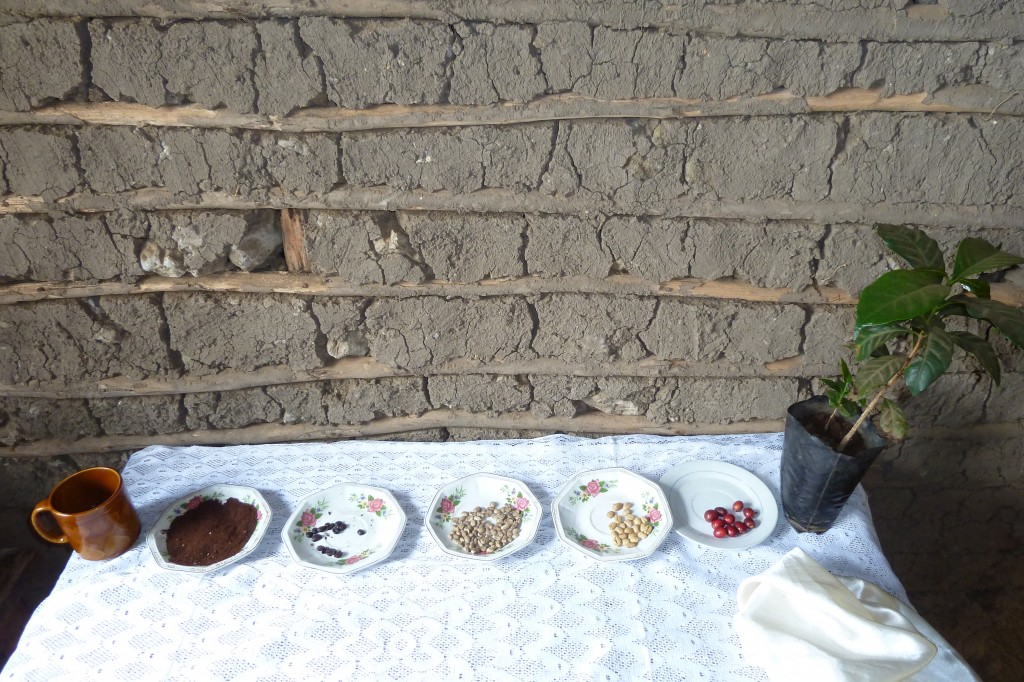
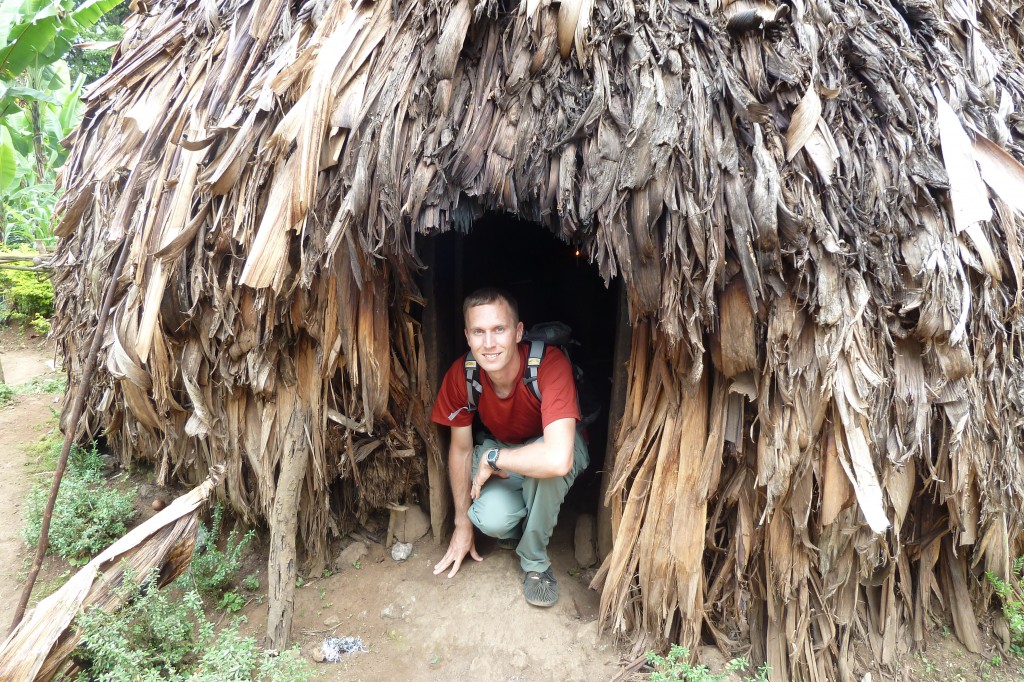
At the end of the tour we entered an old hand-dug cave used by the Chagga people to hide their families and livestock from the Masaai when the two tribes were at war, many years ago. We only went in a short distance but there are 5 km of passages.
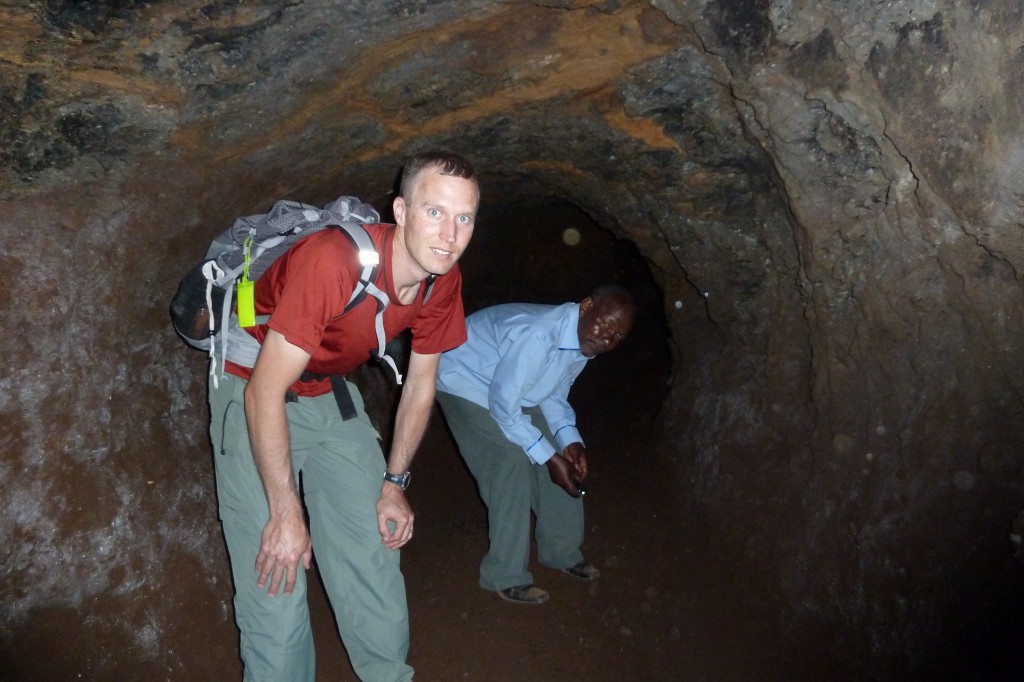
Gearing up for Kilimanjaro
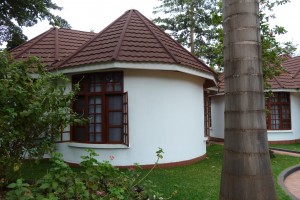
After the tour we returned to Moshi and met Caspar, our guide who gave us a briefing of what to expect on our climb, then came to our hotel to check our equipment. This time we were in the luxurious Sal Salinero hotel. (Let the honeymoon begin!) We returned to town to pick up the things we needed and went back to the hotel to have dinner and pack for the hike. Tomorrow we meet Kilimanjaro!
To be continued…
* The link to Amazon is an affiliate link–if you make a purchase I will earn a small percentage. (Thanks for helping to support my new business!)
Enter your name and email to receive my newsletter and stay up to date!
We hate spam as much as you. Your email is safe with us.
